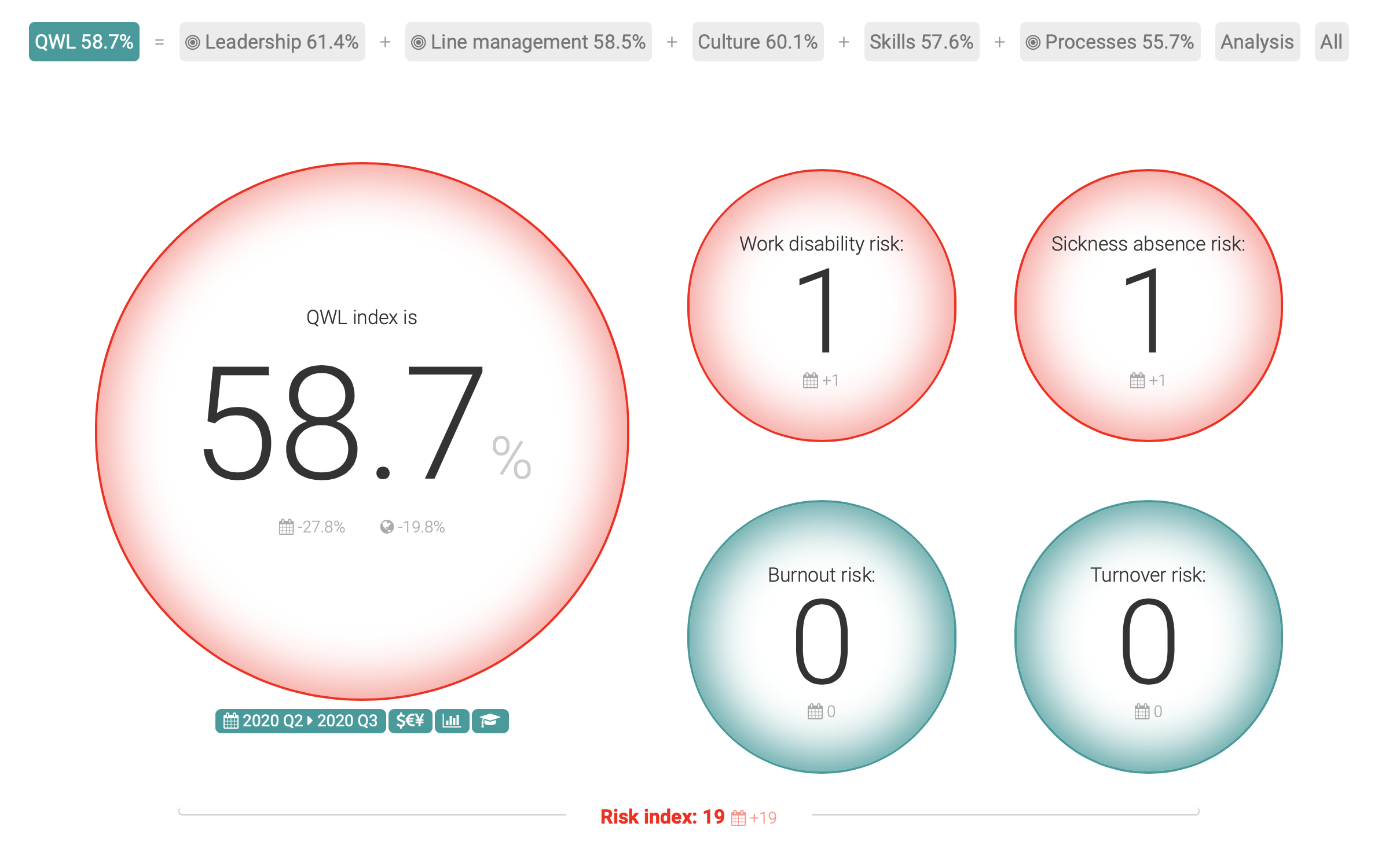Leave from work comes in many forms – career’s, annual, personal leave, just to name a few. This paid time off work is just one way of showing you care for your employees’ welfare.
However, when your employees are using their leave entitlements, such as sick leave, for purposes that are not in line with what they are intended for, this can have a negative impact on your organisation and even indicate that they’re not content in their roles.
When not properly managed, employee absenteeism can become a serious threat to your business. Frequent, unscheduled and unauthorised days off affect productivity levels, the delivery of service and the overall morale of your company.
It can also have a negative impact on your bottom line. In fact, absenteeism is costing the Australian economy more than $44 billion every year - equating to $578 per worker per day of absence.
To mitigate sickness and absence risk from hurting your business, you must understand what motivates these kinds of unplanned absences and know how to deal with them.

What is sickness and absence risk?
Sickness and absence risk occurs in your company when you are experiencing high absenteeism of employees without any valid reason. While there’s nothing wrong with people being sick and taking days off to recover, prolonged and consistent use of sick days can indicate an underlying problem.
High absenteeism also occurs when employees are taking leave beyond what is permitted or if their number of absences is comparably more significant than others.
As time away from the business is detrimental in accomplishing tasks and achieving goals, sickness and absence risk must be addressed immediately. If not, it can foster an unhealthy workplace culture and create expensive problems for your business.
How does sickness and absence risk affect your business?
- High absenteeism diminishes your business’ productivity level due to less available workers.
With fewer team members present, more tasks are left unaccomplished or take considerably longer, dropping productivity and decreasing profits. The Chartered Institute of Personnel and Development (CIPD) reported that the estimated cost of absences per employee in the UK was £554 every year.
- Other employees stress or burnout due to the heavier workload they carry.
Based on the report by the Society for Human Resource Management (SHRM), workers are perceived to be 29.5% less productive when covering for absent employees. It’s understandable, considering they have to adjust their workload and schedule to keep things moving. They also have to work overtime to accomplish more tasks.
- To keep daily operations going, you are forced to hire and pay temporary workers to cover for absent employees.
The time spent hiring and training contract employees takes time and money. It also distracts you from focusing on other urgent matters that require your full attention.
A survey by the Society for Human Resource Management (SHRM) said that supervisors spend an average of 4.2 hours a week or 5.3 weeks a year dealing with absences, which includes finding replacements and providing training.
- Employees who take frequent sick leave days or unwarranted absences often suffer from low performance.
Absent employees tend to miss deadlines, meetings and even training sessions. As expected, this affects the quality of the output they produce and the services they deliver. It may also result in lower performance levels during the time that they are actually present.
- Customer satisfaction can drop.
With the lowering of productivity, sickness and absence risk can lead to delays in the prompt delivery of services. The absence of employees in key decision-making roles can also delay and compromise the quality that is delivered to clients.
 To prevent sickness and absence risk from impacting your business, it’s important to understand what causes it. Knowing these reasons can help you take necessary action and implement improvements.
To prevent sickness and absence risk from impacting your business, it’s important to understand what causes it. Knowing these reasons can help you take necessary action and implement improvements.
How to address sickness and absence risk
There are many possible reasons why employees resort to taking frequent and unauthorised absences.
Some may be trying to get out of work because they’re not satisfied with what they do and simply feel unmotivated most of the time. There are also workers who would rather be absent than suffer from bullying or unfair treatment from their colleagues.
Burnout is also a common reason for absenteeism, as employees may avoid work due to a stressful environment, workload and sheer exhaustion.
And, of course, there may be employees who take leave days due to an illness or injury (themselves or others) or because they have important responsibilities at home like childcare.
 Regardless of the reason, it is important to hear your employees’ side and acknowledge their concerns. You can only make reasonable adjustments and support them in getting back to work if you know where they are coming from.
Regardless of the reason, it is important to hear your employees’ side and acknowledge their concerns. You can only make reasonable adjustments and support them in getting back to work if you know where they are coming from.
Fortunately, innovative tools like VibeCatch’s employee engagement QWL (Quality Work Life) surveys enable you to facilitate continuous listening that provides your organisation with relevant insights to effectively manage your company’s sickness and absence risk.
How do QWL Surveys help your business?
The Quality of Work Life (QWL) survey is a pulse survey built on a scientific method that allows you to measure employee job satisfaction levels and their overall welfare.
 Fig 1. Quality of work life Risk index dashboard
Fig 1. Quality of work life Risk index dashboard
With the accurate data and insights it delivers, you can determine where each department, employee group or worker stands in terms of the different risks – including sickness and absence risk.
To give you relevant feedback regarding the state of your employees, our VibeCatch’s QWL Survey is calculated through three main drivers:
- Physical and Emotional Safety
- Social Cohesion and Identity
- Goals and Creativity
You can also use the Heatmap and Distribution features to help you proactively detect sickness and absence risk. This allows you to immediately deal with any concerns before they become a considerable problem for your daily operations.
 Fig 2. Quality of work life risk index heatmap
Fig 2. Quality of work life risk index heatmap
What’s better still is that the QWL survey is completely anonymous. This encourages employees to be completely honest about why they take frequent absences.
Through the VibeCatch platform, you have a better way to track employees’ wellbeing, identify risks and address concerns that may hinder your business’ growth and success.
What is VibeCatch?
VibeCatch is an HR platform based on 15 years of proven research, offering you the opportunity to make a difference and prove the impact that you know you make every single day for the people around you.
Through VibeCatch’s QWL Polls, Pulse Polls and 360 Feedback Polls, you can uncover hidden opportunities, correct issues and address areas of improvement for both employees and management.
This allows the HR department to work based on reliable information and have a tangible Return on Investment (ROI) to present to management.
Book an obligation-free consultation today and we’ll discuss your options to show you how VibeCatch can help you help everyone.



